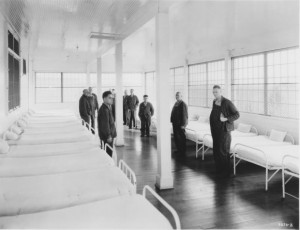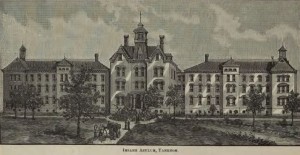
Chiefs of the Yankton Sioux With Their Indian Agents, courtesy S. J. Morrow Collection, the W. H. Over Museum, University of South Dakota
Indian inspectors had their hands full trying to ensure that laws and policies were properly carried out within all the reservations (see last post).
But, it was the Indian agent who actually made things tick at the local level. Almost all reservations had an agent, who wielded enormous power over the lives of the Native Americans who were living on them as wards of the U.S. government.








